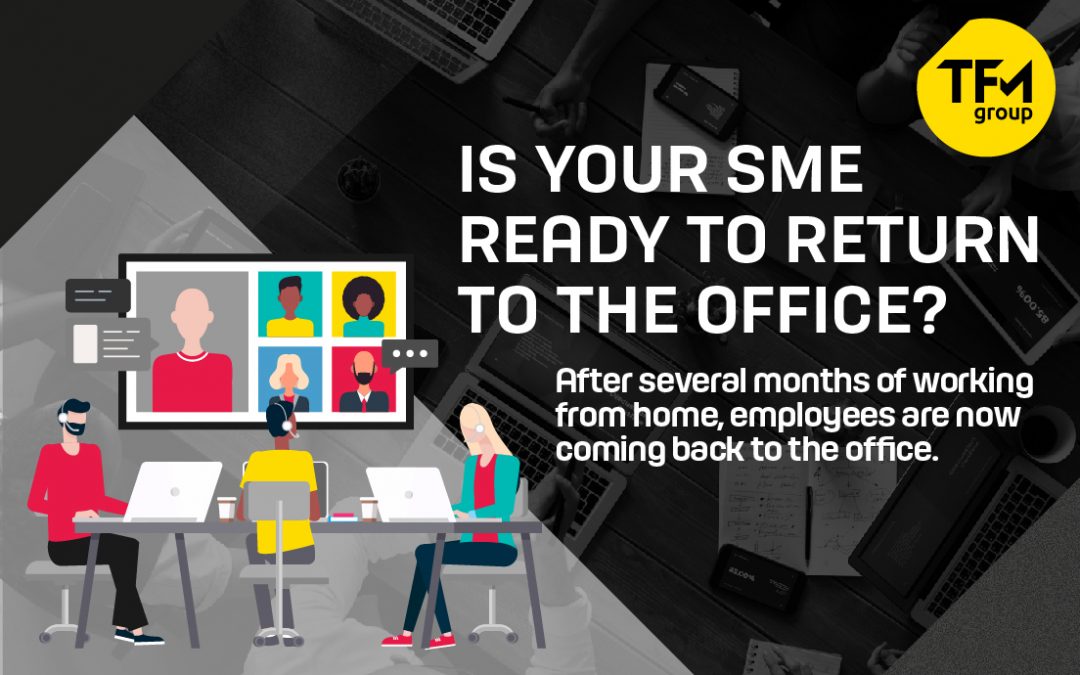After several months of working from home, employees are now coming back to the office. But with the new normal here to stay, it’s time to start seriously thinking about how you can adapt long-term.
How quickly times change. Just a few months ago, Britain’s business owners were busy embracing work-from-home rules and figuring out how to make the remote dream a reality. Now, a staggering 97% of us say we’re ‘homesick’ for the office. We want to get back to the workplace to see our colleagues again.
And yet, a year of working differently has altered expectations. Almost eight out of 10 of us would prefer to adopt a hybrid work model when restrictions are lifted, according to Steelcase. Given the choice, most of us would like to work from home for two days a week or more.
For SMEs, it’s clear that home working will be a bigger part of the blend than it was before the pandemic. You may need to improve standards for home working and office spaces going forward.
Take my desk, I dare you!
A widespread appetite for hybrid home-office working means that your office will not be as busy as it was before. That’s great from an overhead perspective. A lot of businesses are now looking to reduce their real estate footprint, because they simply will not need as many desks as they did before.
What these businesses are doing is swapping out permanent, allocated desks for hotdesking, where different desks are used by different people at different times, depending on who is in the office that day. It’s a simple-enough arrangement—you pick a desk, plug in your laptop, and off you go.
Just a few years ago, SMEs would have needed enterprise-grade IT capabilities to support a hotdesking strategy, and the cost would have been prohibitive. Now, you can launch a hybrid/ hotdesking strategy in a really budget-friendly way.
There are three main components of a hot desking strategy:
- Mobile hardware
- Collaboration software
- Solid communications
Let’s look at each in turn.
Mobile hardware solutions
Hot desks usually come with their own power outlet and wi-fi connection. People move from desk to desk, so they need tech they can carry with them. Luckily, an investment in laptops, tablets, mobile phones and docking stations won’t break the bank like they did before.
There are some things to think about before taking the plunge with new hardware.
- Will everyone have their own laptop with wireless network infrastructure in the office?
- Do you want to look at using virtual desktop infrastructure, where everyone can access their desktop and applications from anywhere on any kind of endpoint device?
- What about peripherals like wireless printers, with cloud print capabilities to send documents for printing in the office when you’re working from home?
- Have you considered leasing rather than buying mobile devices to make your budget go further?
- Do you have a failsafe if the Wi-Fi goes down, like a wireless WAN?
Different options will work for different organisations, so you’ll want to speak to an independent advisor and figure out what works best.
For SMEs, this is the perfect time to look at your hardware requirements holistically. You need to provide tech and software solutions that are consistent with and complement each other, to ensure compatibility and make sure that everyone can plug in and get to work, no matter which desk they’re assigned to that day.
Software for communication and collaboration
From a software perspective, there are great things you can do with applications like Microsoft Teams, Zoom, Slack and Google G Suite. Messaging, voice and video calls are now easy to use and of a really high quality. You can use these platforms to keep your people in touch with each other no matter where they are in the world.
If you haven’t already, then it might also be a good time to switch to a public or private cloud strategy. With services like messaging, email, documents, data-storage and backup hosted in the cloud, it’s a lot easier for users to move seamlessly between home and the office, knowing that they can access their work from anywhere.
Basically, anything that encourages collaboration is ideal for hybrid work arrangement. Tools like Teams provide employees with contact regardless of location, so no one is ever left out of the loop.
The comms strategy
The final part of the puzzle is your communications strategy. The traditional hotdesking approach is an on-premises PBX-based phone system with ‘follow-me’ capabilities, where each staff member has a number that follows them around the office wherever they go.
For smaller businesses, a VoIP service might offer better value. These technologies are more affordable than ever, and can be hosted off-premises. So aside from cabling, you don’t need to add any infrastructure at the office.
For a system that supports hybrid working and hot desking, you’ll want one that delivers features such as call queues, digital reception and Find Me/Follow Me. Everything should integrate, which means your VoIP can sync seamlessly with apps like Zoom or Microsoft Teams.
Typically, VoIP systems are license based. This makes them much easier to expand – or contract – as your workforce or requirements change.
The bottom line
The world of work is going hybrid. That’s going to need some flexible technology solutions that travel with your employees, no matter where they are working from that day. The good news is, there are plenty of cost-effective solutions out there. With the right hardware, software and comms set up, hot desking can live up to its potential. It just needs a little preparation.


